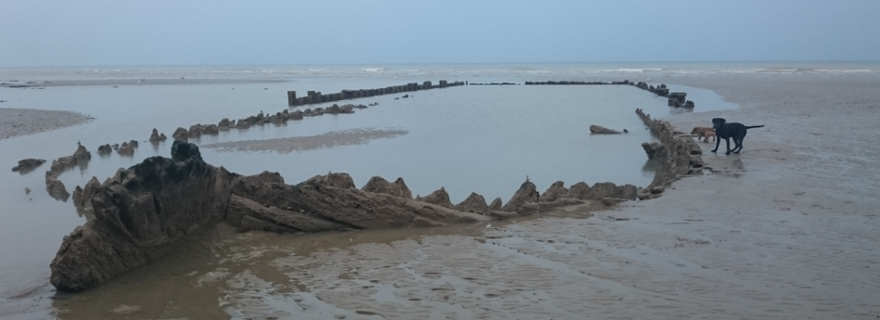
Student exhibition: unearthing the story of the VOC ship Amsterdam
A new student-curated exhibition in the F1-corridor of the Van Steenis building brings history to life through remarkable finds from the Amsterdam, a merchant vessel of the Dutch East India Company (VOC) that met an untimely end in 1749. 'The story of the Amsterdam is truly unique, especially considering how many finds have been preserved and the remarkable condition these are in.'
The untimely end of the Amsterdam
On November 15th, 1748, the Amsterdam set sail for East India. After multiple failed repair attempts, the ship ran aground near Hastings on January 26th, 1749, caught between two upstream waves in brackish waters. Despite the harsh conditions and shifting tides, two-thirds of its cargo remained preserved beneath layers of clay and peat.

Excavations
Excavations led by Stichting VOC-schip Amsterdam in 1969 and again between 1984–1986 uncovered parts of the upper deck, the stern, and surrounding wreckage. Over 897 hours of underwater archaeological research revealed a wealth of material culture, offering insight into life aboard the ship and its broader historical context. Due to its fragile position, the Amsterdam could not be salvaged and still rests near Hastings.
The objects on display tell the story of the ship through their materials, traces of personal ownership, and customs both on and off board. The exhibition was developed by students Emma and Amber, who dove deep into archival records and maritime archaeology to bring the Amsterdam’s journey to light.
This exhibition is the result of an internship within the VOC Ship Amsterdam project, coordinated by Robin Jonker and Prof. Dr. Martijn Manders. The aim is not only to study the hundreds of objects now housed in the Van Steenis building, but also to prepare them for deposition in the National Maritime Depot in Lelystad.

Truly unique
Students Emma and Amber had the opportunity to work on the exhibition through an intership with Professor Martijn Manders.
Emma: 'The story of the Amsterdam is truly unique, especially considering how many finds have been preserved and the remarkable condition these are in. Amber and I felt it was important to show as many sides of the ship’s journey as possible, from life on board to the logistics of such a large maritime excavation. It was very special to contribute our own small part to telling that story.'
Amber: 'What fascinated us most was not only the story of the wreck, but also how the Amsterdam functioned during its lifetime — what the ship looked like, how it was used, and who the people on board were. Working through old records alongside the finds, we could start to link objects to their function or even to the people who once used them. Making those connections made the history feel very tangible, and that sense of discovery is what we wanted to share in the exhibition.'
Visit the exhibition
For the next couple of months, the exhibition can be found in the F1-corridor in the Van Steenis building, opposite the Computer Lab.
